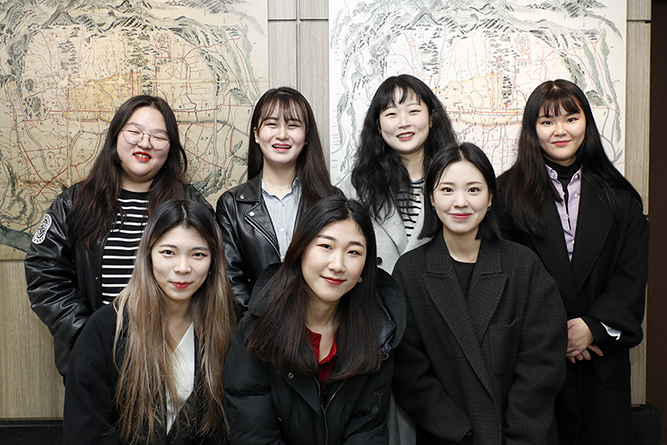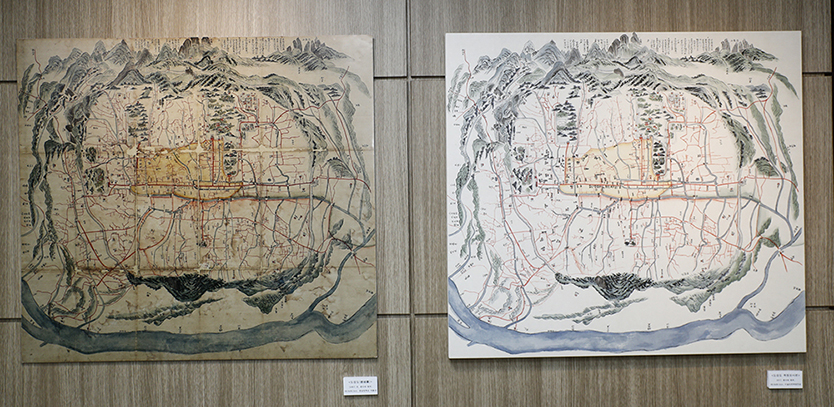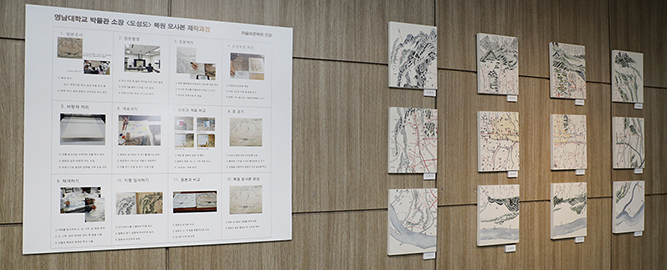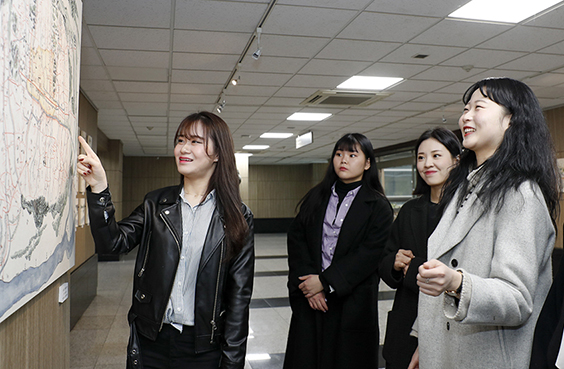Art Students Make Restorations More Valuable than Originals N
No.89047- Writer pr
- Date : 2018.03.22 09:29
- Views : 8498
YU Art Conservation major students draw attention by restoring two artifacts in the university museum
Only 20 students in the entire class with professional skills participating in restoration work of collections of the National Museum
Must complete 5 different majors. Difficult but promising as a professional field
[March 13, 2018]
Only 20 students in the entire class with professional skills participating in restoration work of collections of the National Museum
Must complete 5 different majors. Difficult but promising as a professional field
[March 13, 2018]

<YU Major of Art Conservation students>
(top row from left to right: Lee Ok-seon, Kim Hye-bein, Kim Young-won, Park Shi-eun, bottom row from left to right: Lee Hye-mi, Lim Ji-soo, Lee Yun-ah)
This exhibit is the result of the ‘Painting Preservation and Restoration Training Class (Professor Jung Doo-hee)’, which is a major class for the second semester of last year. The restored work was put on display on the 1st floor lobby of the Central Library from March 5 to March 9, drawing the attention of students.

<Original (left) and restored work (right) of the ‘Doseongdo (YU Museum Collection, early 19th century) restored by Art Conservation majors>
The YU Major of Art Conservation is a small group of elite students. There are only 20 persons in the entire grade, but their skills are on par with professionals. They also participated in various restoration projects at national museums. They have been recognized for their skills and even participated in the restoration of project of a portrait of King Gojong (collection of the National Museum of Korea) at the request of the National Palace Museum of Korea. They also participated in the restoration of a 4 meter long farm flag at the National Maritime Museum in Busan, and the work that they restored was used at the Haeshinje Festival.

<Production process of the restored version of the 'Doseongdo' (YU Museum)>
YU School of Fine Arts senior Kim Hye-bin (22, interdisciplinary major in Art Conservation) said, “I was able to see the original several times while working on it. Originals and photos have considerable differences, so it is only obvious that there will be differences in the restored work. Being able to see the actual piece was really helpful.”

<Stationery painting restored by students majoring in art conservation>
The major of art conservation is an interdisciplinary course combining the five majors of the School of Fine Art’s major of painting and major of transart, as well as the School of Materials Science and Engineering, Department of Fiber System Engineering, and the Department of Forest Resources and Landscape Architecture. This program was newly established in 2016 and there are currently 20 students in the interdisciplinary major course. These students will prepare to acquire cultural artifact repair technician copying technician. After graduating, career options include becoming a preservation and restoration expert at museums and art galleries.

Professor Lim said, “Paintings usually is on making creative pieces. Art conservation deals with various fields starting from creation to follow-up such as conservation and restoration and thus requires integrated knowledge on various majors, therefore giving it bright prospects as a professional field.”
Professor Jung Doo-hee, who is in charge of the painting preservation and conservation class, said, “The YU Museum possesses many cultural artifact-level relics such as ancient maps. I suggested to the museum that it would be meaningful to do restoration work on the artifacts possessed by the university and that it would help students, and the museum agreed happily.” He added, “We will continue the restoration projects on our artifacts with students in our major by working with the library and museum in the future.”